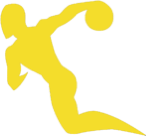

Why You Should Learn Hammer
Recruitment Advantage: Learning the Hammer Throw
We at MNThrowcoach are working to give our athletes a leg up on the competition by offering sessions that will introduce the basics of the hammer. Colleges across the Midwest are in need of hammer and weight throwers. However, in the Midwest high school throws scene, the hammer throw is an under developed skill because it is only thrown in competition at the Summer USATF meets. All college track teams, from NAIA to NCAA D1, D2 and D3 throw the hammer in the outdoor season. Learning the basics of throwing the hammer now may provide a huge recruitment advantage.
College throws coaches recognize that the hammer is one of the hardest events for throwers to learn in their first year. Many of the techniques that make them successful shot and disc throwers do not transition naturally to the hammer. The techniques are vastly different from the shot and disc and take an exceptional amount of time to learn. Below are examples and explanations for the hammer techniques that we at MNThrowcoach will be teaching in our hammer sessions:
Connection and Separation
In the hammer throw, an athlete is taught to stay “connected” to the implement. That means that the toe turns/pivot done with the right foot stay connected with the toe/heel turns of the left foot, while also keeping the hammer aligned with the torso, and one’s head aligned with the hammer (aligned = connected).
This differs greatly from the “separation” of the hips and upper body that is taught in both the spin and glide techniques.
Toe/Heel turns vs Spin/Glide
In the hammer throw, athletes turn 3 to 4 times in very tight succession. These turns are performed on the toe and heel of the left foot and the toe of the right. There is no other throw event in which this technique is used. It is very different from the pivoting and sweeping type turn employed in the shot and disc.
Countering
Countering refers to an athlete’s ability to hold the proper posture through the single support step over phase of the hammer throw. Again, this technique is unique to the hammer. At this stage of the throw, an athlete is stepping over with their dominant foot and is in single leg support as the force of the hammer ball is attempting to “pull” the athlete into the sector. This stage requires both specific hammer throwing strength and an immense amount of core strength.
Double leg support and the Finish
The hammer throw requires a high amount of double leg support time combined with a strong finish. A hammer thrower hopes to have 50% or more of the throw happen in double support. This also differs greatly from the shot and disc throws in which very little time is spent in double support.
What we are offering, is a massive jump start to the learning process which could turn out to be an advantage in recruiting. Instruction and training in the hammer is an added advantage that may set you apart from other athletes. Get yourself a leg up on the competition and sign up for our MNThrowcoach Hammer sessions today!